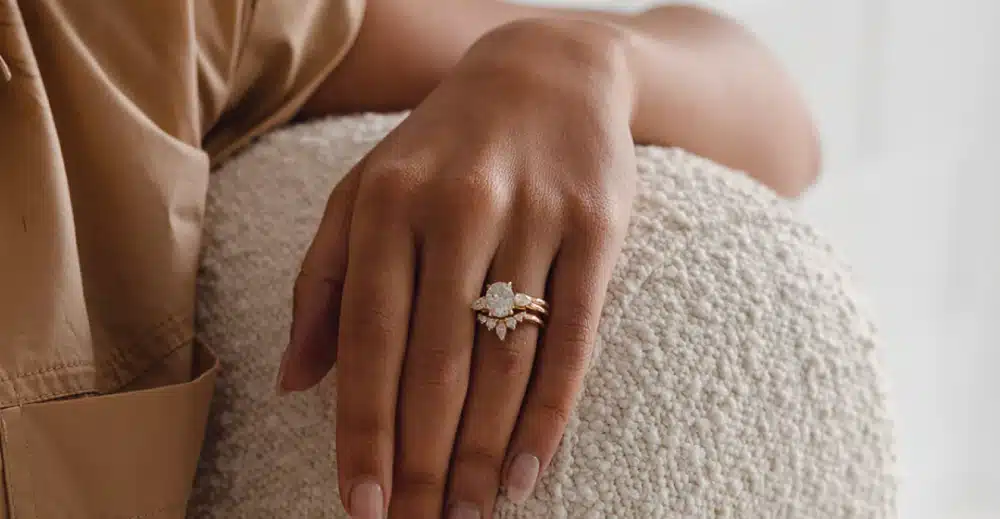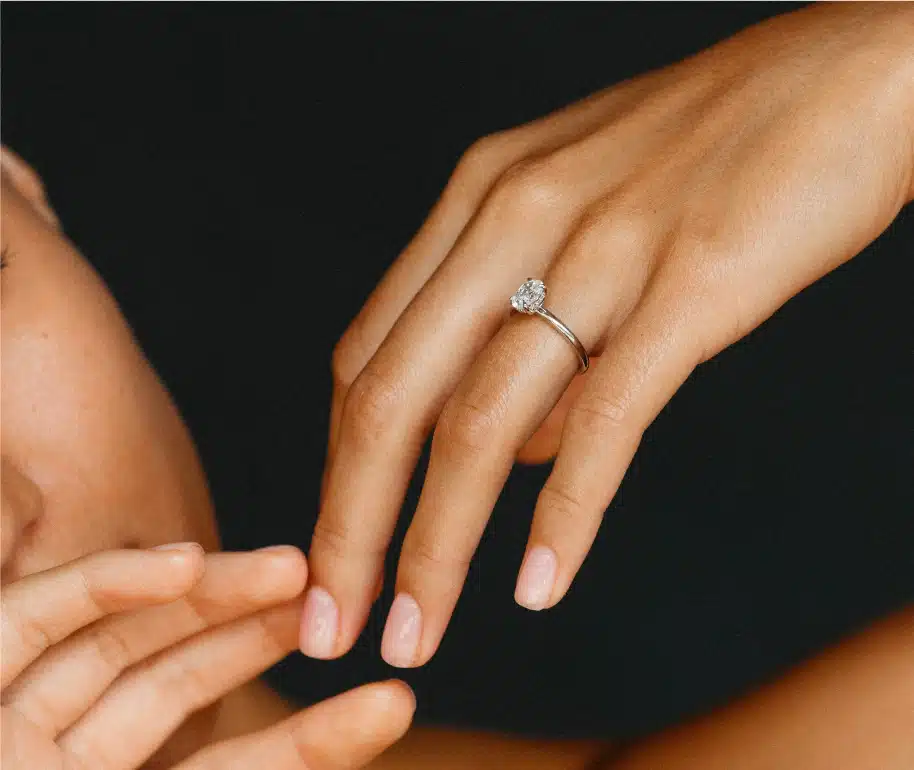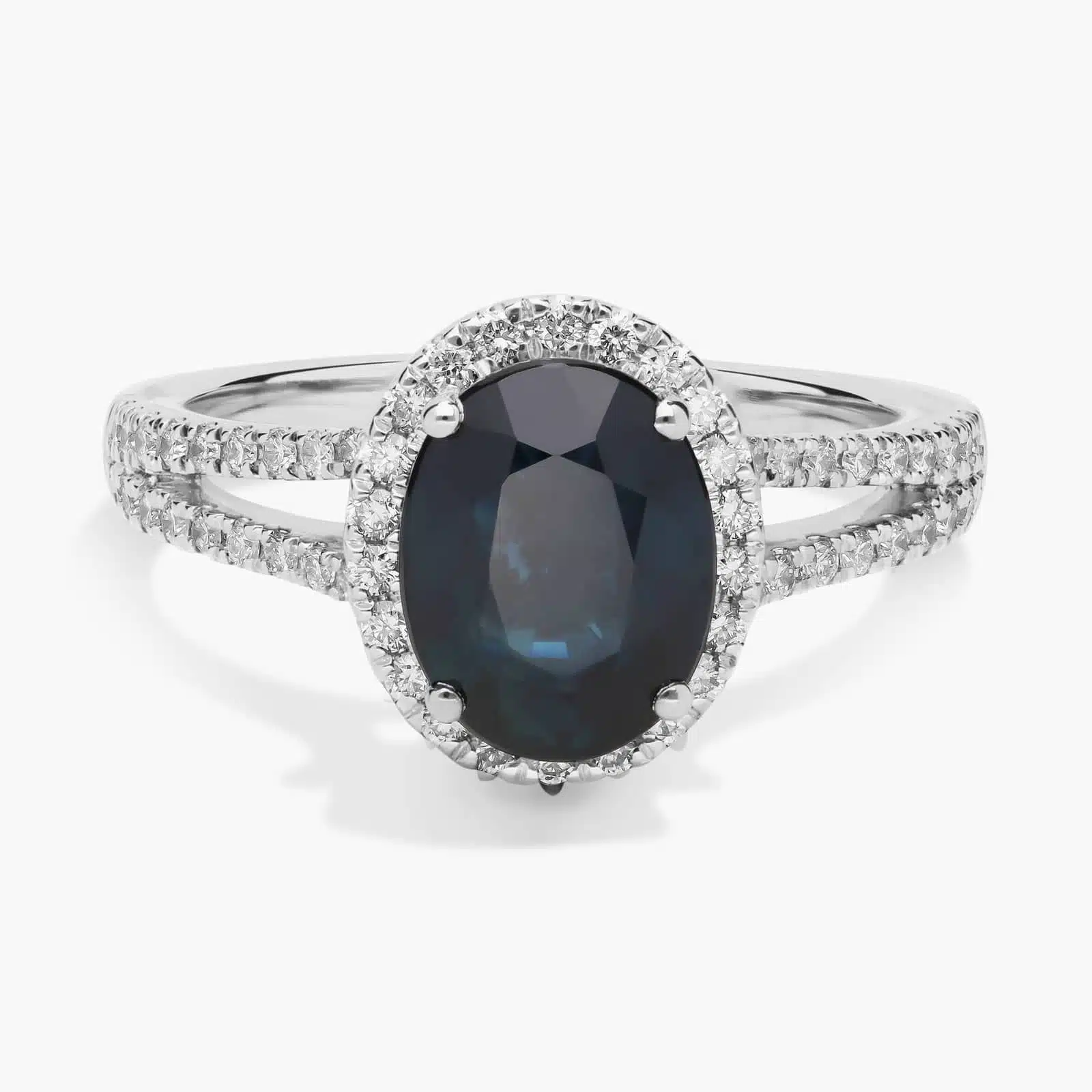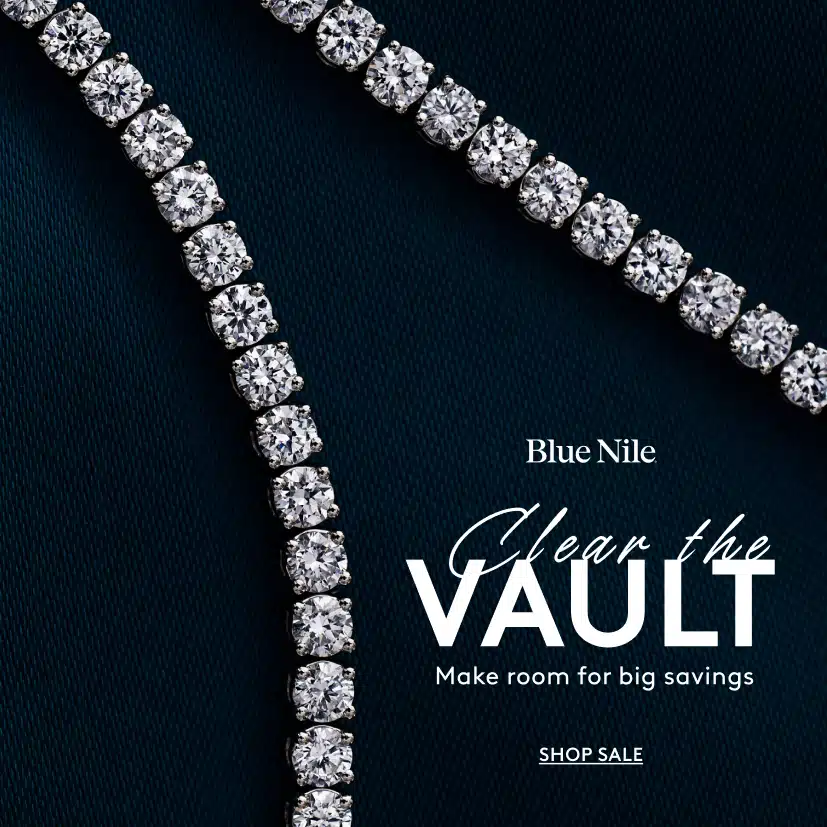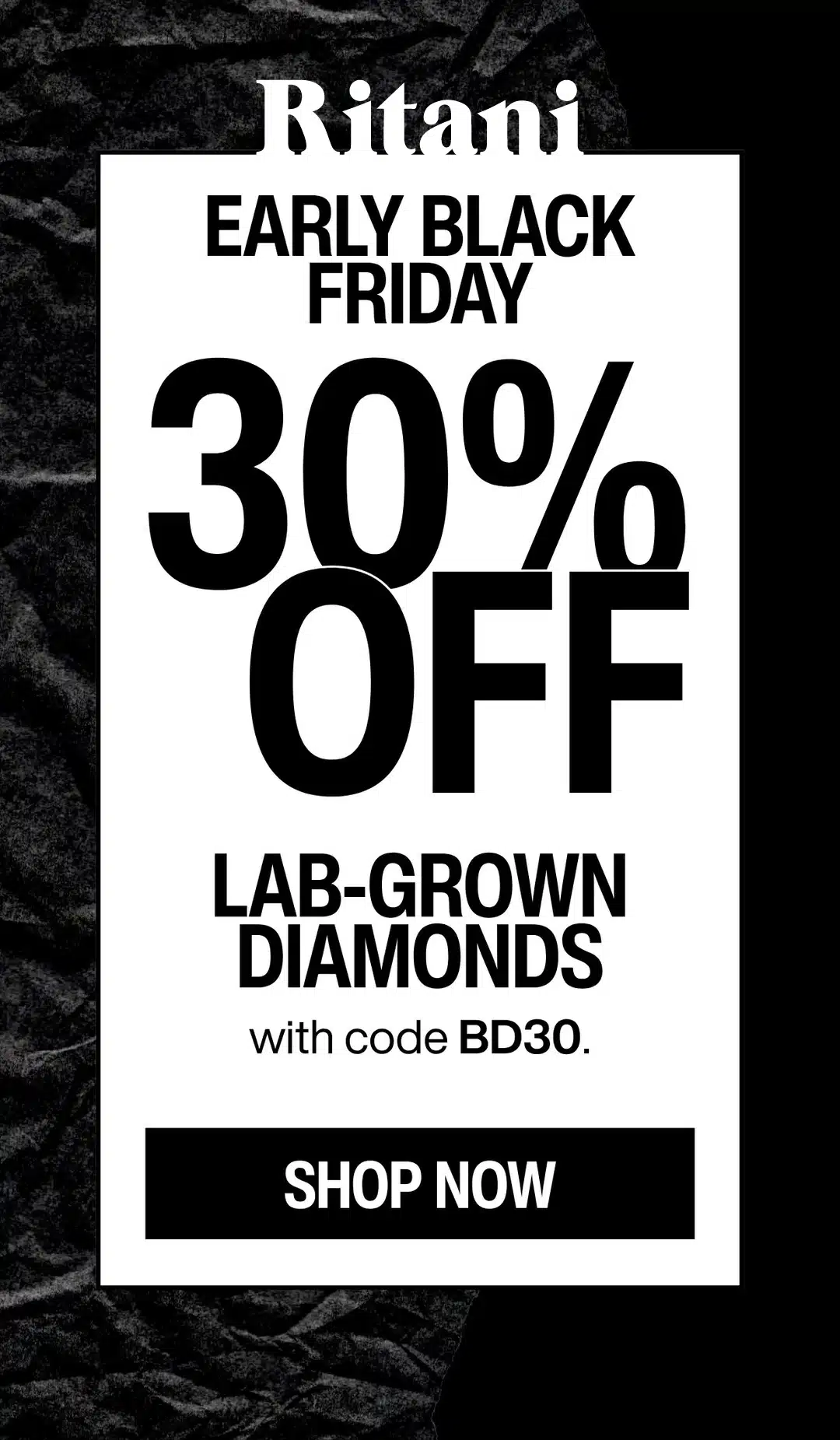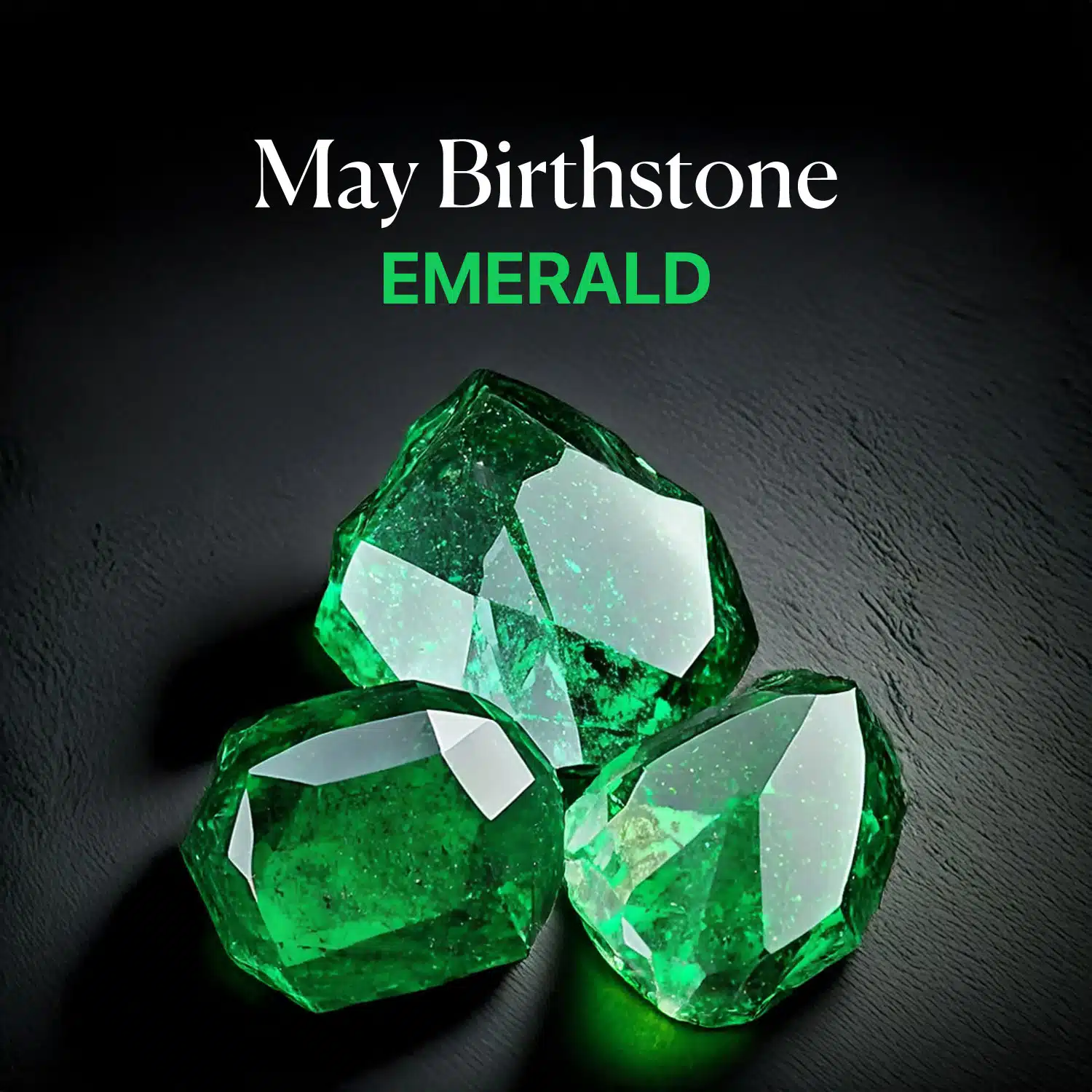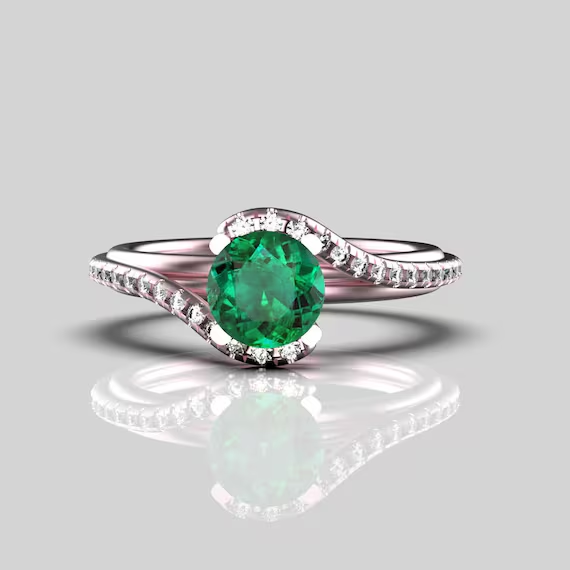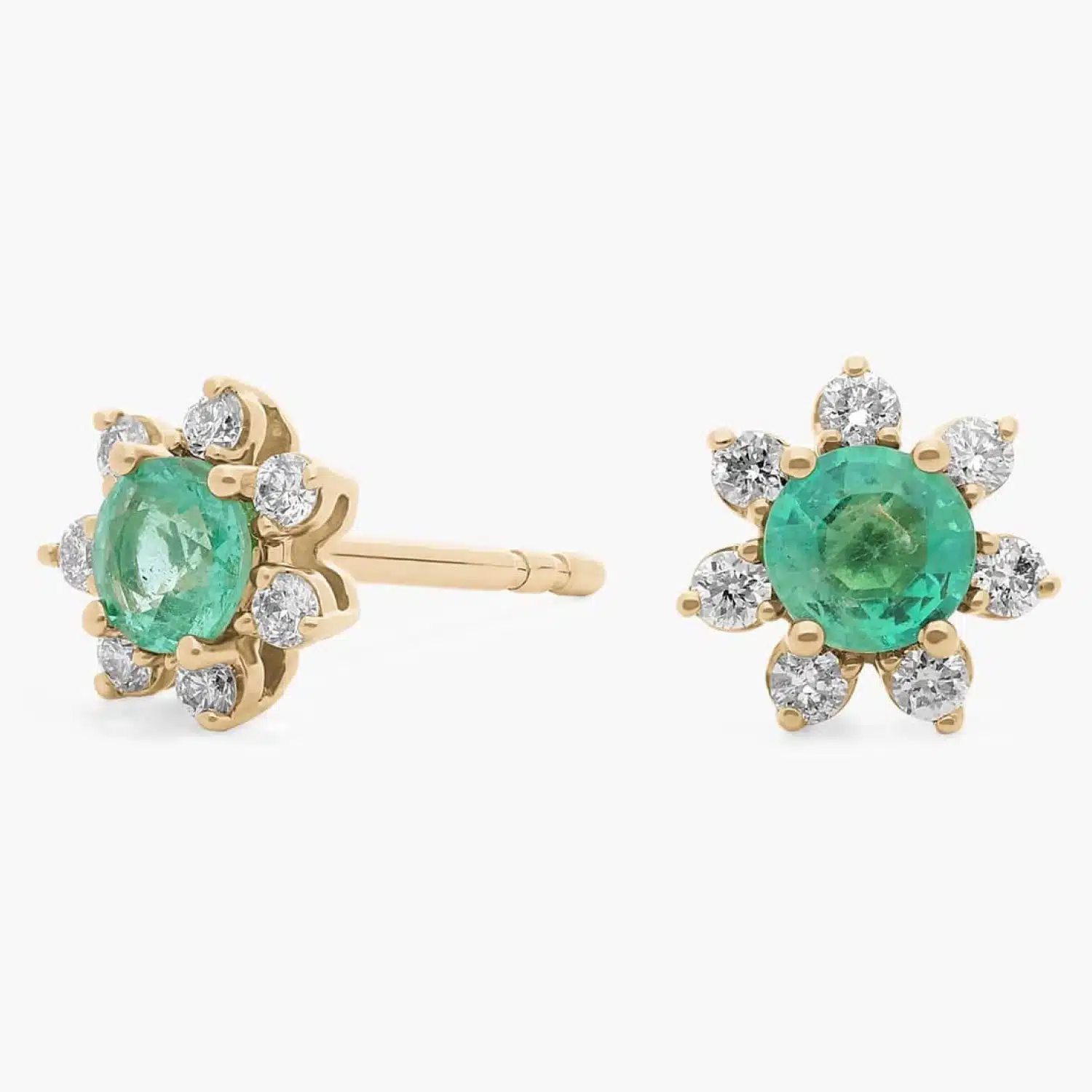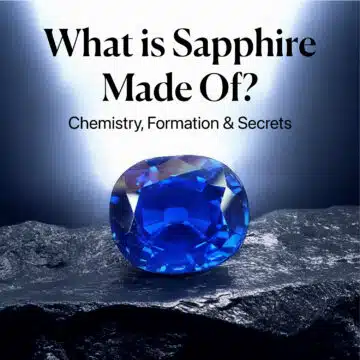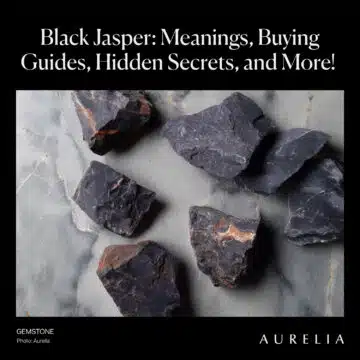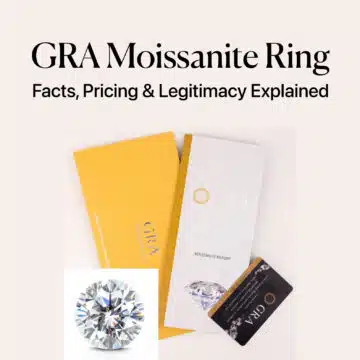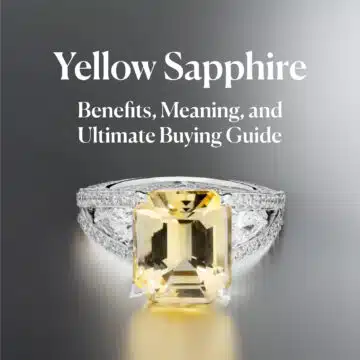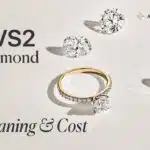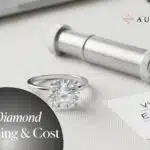The primary and most recognized May birthstone is the vibrant green emerald. But here’s the straight scoop most jewelers won’t tell you: that’s not the whole story. Emerald leads the modern birthstone list, but the rich, earthy Agate is the traditional choice, while the radiant Chrysoprase stands as another gorgeous green alternative. As a GIA expert, my job is to show you all the options.
Every month has a story told through its gems, from the deep red of the January birthstone color to May’s rich spectrum of green gemstones. Before we dive deep into the world of emeralds, here’s a quick look at how these three incredible May birthstones stack up.
| Feature | Emerald | Agate | Chrysoprase |
| Primary Color | Vivid Green | Banded (All Colors) | Apple-Green |
| Mohs Hardness | 7.5 – 8 (Brittle) | 6.5 – 7 (Tough) | 6.5 – 7 (Tough) |
| Price Point | | $ (Affordable) | |
| Core Meaning | Love & Rebirth | Strength & Protection | Joy & Optimism |
- The Complete Profile of Emerald: Gem of Rebirth
- My Insider’s Guide to Buying an Emerald
- Your Alternative May Birthstones: Incredible Character & Value
- The Cardinal Rule: How to Care For Your Emerald Jewelry
- Wearing the May Birthstone: Style, Jewelry & My Top Picks
- FAQs: Your May Birthstone Questions, Answered
The Complete Profile of Emerald: Gem of Rebirth
When we talk about the May birthstone, the conversation always begins and ends with emerald. And for good reason. This isn’t just another green gem; it’s a stone with a soul, a history stretching back to the dawn of civilization, and a presence that can silence a room.
From my years on the wholesale side of the business, I can tell you that no other colored stone commands the same blend of reverence and passion as a fine emerald.
But to truly appreciate it, you have to understand it. We’re going to pull back the curtain and go deeper than any standard guide. We’ll cover what it is, where it comes from, the powerful stories it carries, and the incredible healing energy that has made it a treasure for millennia.
What is an Emerald, Exactly? The Science and Formation
Before we get into pricing, history, or mystical meanings, let’s talk about what an emerald actually is. On a scientific level, an emerald is a specific variety of the mineral beryl.
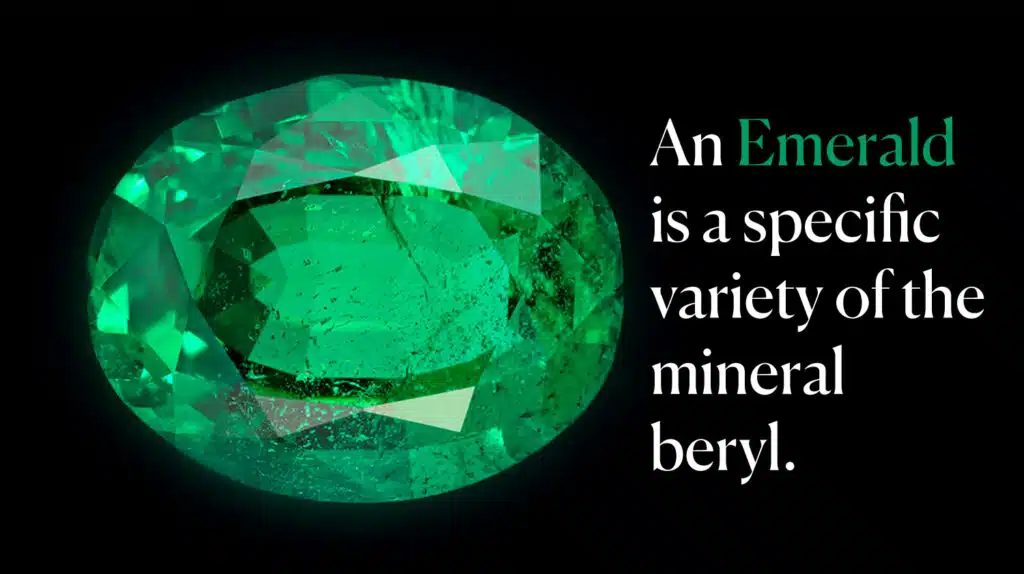
It only earns the name “emerald” when it meets two criteria: its color is a rich, distinct green, and that color is caused by trace amounts of either chromium, vanadium, or a combination of both. Without that specific element, it would be a different beryl, like a light green beryl, but not an emerald.
It is a geological miracle, which is a big part of why it’s so rare and valuable. Understanding what sapphire is made of, which is the mineral corundum, helps you appreciate just how different the formation process for a beryl crystal like emerald truly is.
Emerald Formation: A Garden Grown Under Pressure
Emeralds don’t have an easy start in life. They form under intense and chaotic conditions. Most emeralds are born in hydrothermal veins—essentially, cracks in the earth’s crust where superheated water, rich with the right minerals, has been forced through at extreme pressure.
This mineral-rich water melts the surrounding rock, and as it cools over millions of years, if the perfect recipe of beryllium, aluminum, silicon, and oxygen is present—along with those key traces of chromium or vanadium—emerald crystals can begin to grow.
This violent formation process is precisely why most emeralds are heavily included. As the crystal forms, bits of liquid, gas bubbles, and other minerals get trapped inside. We in the trade have a beautiful name for these inclusions: jardin, the French word for “garden.” And frankly, that’s what they look like—tiny, mossy, garden-like scenes inside the gem.
Here’s an insider tip: don’t let a jeweler convince you that inclusions are just flaws. I see them as fingerprints from Mother Nature. A truly flawless natural emerald is so rare that it’s worth more than a top-quality diamond of the same size. That jardin is your proof of a natural, earth-mined stone and tells a story of its tumultuous creation.
Physical Properties of Emerald
- Hardness & Toughness: Emerald sits at a respectable 7.5 to 8 on the Mohs hardness scale. This means it’s quite durable and resistant to scratches. However—and this is critical—it is not tough.
Due to its natural inclusions, emerald is a brittle stone that can be chipped or fractured far more easily than a sapphire or diamond. Think of it like glass: it’s hard enough to scratch steel, but you know better than to drop it. - Luster & Refractive Index: An emerald has a beautiful vitreous (glass-like) luster. It doesn’t have the fiery sparkle of a diamond, but rather a soft, radiant glow that seems to come from within. Its beauty is in its color, not its brilliance.
- Emerald Origin: While emeralds are found in a few places, three sources dominate the conversation:
- Colombia: This is the king of the emerald world, producing the stones against which all others are judged. Colombian emeralds are known for their warm, deep, slightly bluish-green hue that is considered the pinnacle of color.
From my time in wholesale, I can tell you that the “Colombian” name carries a significant price premium. The famous Muzo and Chivor mines produce some of the most legendary stones in history. - Zambia: The most significant challenger to Colombia’s crown, Zambia produces stunning emeralds that are often a cooler, more bluish-green and are frequently less included (clearer) than their Colombian counterparts.
I often advise clients that Zambian emeralds represent some of the best value on the market today—you can get a spectacular, vibrant stone for less than a Colombian of similar quality. - Brazil: Brazil is another major producer, often known for emeralds that are lighter and more yellowish in tone. More recently, some Brazilian mines have also become known for their focus on sustainable and ethical mining practices.
- Colombia: This is the king of the emerald world, producing the stones against which all others are judged. Colombian emeralds are known for their warm, deep, slightly bluish-green hue that is considered the pinnacle of color.
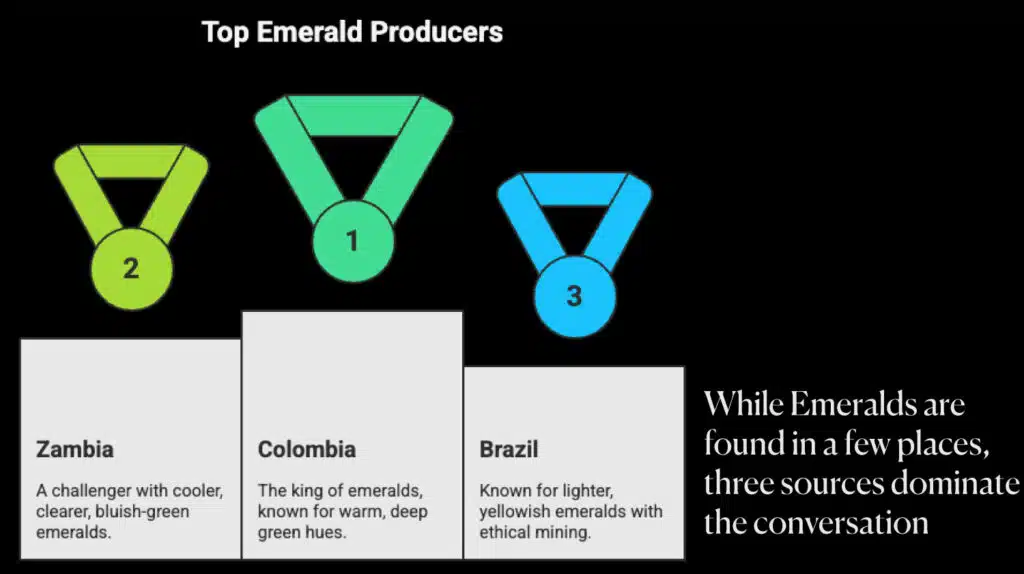
A Journey Through Time: Emerald History and Mythology
The story of the emerald is the story of human fascination with power, beauty, and the divine. You’re not just buying a stone; you’re buying into a legacy that is thousands of years old. Its history is absolutely baked into its value today.
The earliest known emerald mines were in Egypt, dating as far back as 330 BC. These mines, later called “Cleopatra’s Mines,” were fiercely protected by the Pharaohs.
Cleopatra, the most famous of them, was obsessed with emeralds, using them lavishly in her royal adornments and claiming ownership of every mine in the nation. For Egyptians, the stone’s green color was a sacred symbol of fertility, immortality, and springtime rebirth.
The Roman scholar Pliny the Elder, writing in the 1st century AD, was mesmerized by the gem, famously stating, “Nothing greens greener.” He noted that lapidaries and gem cutters would rest their tired eyes by simply gazing upon an emerald, finding the soft green hue restorative. The Greeks linked the stone to Venus, the goddess of love and beauty.
But the world’s perception of emeralds changed forever when the Spanish Conquistadors arrived in South America in the 16th century. They discovered the Inca using enormous, breathtaking emeralds in their religious ceremonies. The Spanish seized the mines and began exporting vast quantities of these high-quality stones to Europe and Asia, establishing a trade route that cemented Colombian emeralds as the world standard.
Emeralds in Mythology and Symbolism
Beyond its verifiable history, emerald is steeped in rich mythology. It was believed that placing an emerald under your tongue could allow you to see into the future. It was considered a powerful protector against evil spells and a stone that could cure diseases like cholera and malaria.
Perhaps most beautifully, it was known as the “Stone of Successful Love”—said to be a talisman of truth that would reveal the faithfulness of a lover, pulsing and changing color if a promise was broken.
The Heartbeat of the Stone: Emerald’s Mystical & Healing Powers
As a GIA expert, I’ve spent years studying the science and structure of gemstones. But over my career, I’ve also listened to countless people describe how these stones resonate with them on a deeper, more personal level.
The belief in emerald’s power isn’t just a historical footnote; it’s a living tradition. Let’s explore the powerful healing energies attributed to the emerald for centuries.
The search for a stone with a personal meaning that resonates with you is a universal one, whether you’re drawn to May’s vibrant green or the mystical play-of-color in the birthstone for the month of October.
Spiritual Healing
At its core, emerald is considered a stone of truth, vision, and divine connection. Often called the “stone of intuition,” it is believed to help pierce through life’s illusions, allowing one to see situations and people for what they truly are.
By promoting this clarity, it enhances spiritual awareness, opens up psychic abilities, and helps you connect with your own inner wisdom. It doesn’t give you answers, but rather clears the way for you to find them yourself.
Emotional Healing
The powerful green of an emerald is profoundly calming, making it an incredible tool for emotional balance. Its energy promotes patience, compassion, and a sense of harmony. For this reason, it is known as the “stone of successful love.”
It encourages unconditional love, loyalty, and unity within partnerships. It helps soothe a troubled heart, heal from emotional trauma, and encourages you to give and receive love without fear. It works to balance the emotions, preventing you from swinging to extremes.
Mental Healing
This clarity of vision also extends to the mind. Emerald stimulates mental focus, reflection, and eloquence. It has long been associated with wisdom and intellect, believed to strengthen memory and allow for a deeper understanding of complex subjects. It’s a wonderful stone for speakers, writers, or anyone who needs to communicate ideas with clarity and inspiration.
Physical Healing
Historically, healers have turned to emerald for a wide range of physical ailments. While these are not a substitute for professional medical advice, they are a rich part of the stone’s story. Emerald was most famously used to soothe and restore tired eyes.
It was also believed to support the heart, lungs, and spine. As a stone of rebirth, it was associated with fertility, believed to ease the process of childbirth, and thought to have a detoxifying effect on the body, particularly the liver.
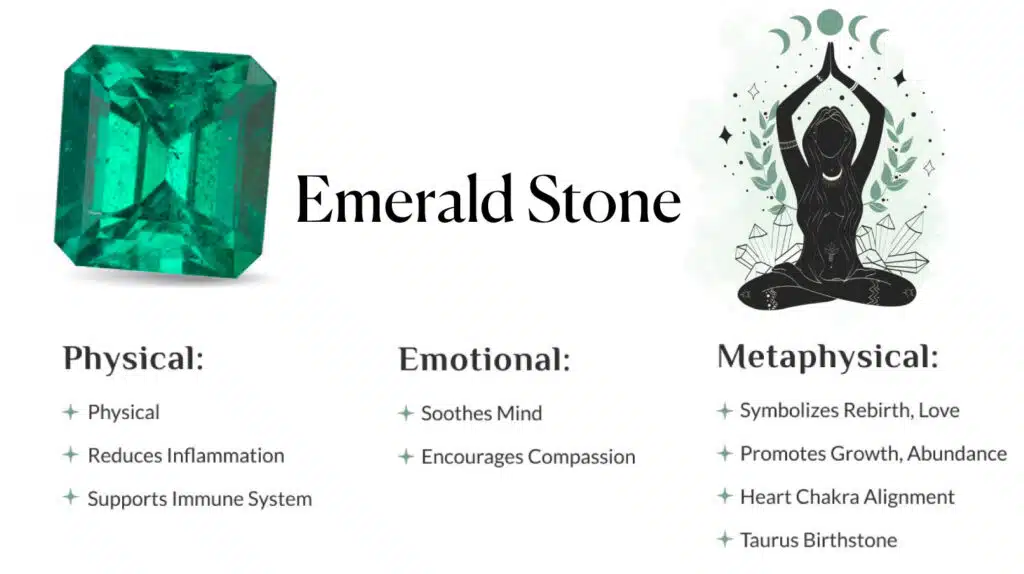
Cosmic & Crystal Connections: Zodiac, Chakras, and Pairings
For those who work with crystal energy, how a stone fits into your practice is key. An emerald isn’t a standalone gem; it connects to broader energetic systems and works in beautiful harmony with other stones to amplify its power.
Chakra Association
Emerald has one of the purest and most powerful connections to the Heart Chakra, known as Anahata in Sanskrit traditions. This is the energy center that governs our ability to love, feel compassion, and find forgiveness. When the heart chakra is blocked, we may feel isolated, critical, or emotionally closed off.
Emerald’s vibrant green energy works to open, activate, and cleanse this chakra, healing emotional wounds and paving the way for unconditional love—both for others and, crucially, for oneself.
Zodiac Connection
Emerald is the primary birthstone for the zodiac sign of Taurus (April 20 – May 20). This is a perfect match. Taureans are known for being grounded, loyal, and having a deep appreciation for earthly beauty and comfort.
The emerald’s energy of love, loyalty, and abundance resonates perfectly with the Taurean spirit. It also has strong secondary associations with Gemini (aiding in clear communication) and Cancer (enhancing emotional security and love).
Crystal Pairing and Combinations
I’ve always found that pairing gems is as much an art as it is a science. You have to consider how their energies interact. When you are pairing gems, especially for jewelry, you have to think about both their energetic properties and how their colors and durability work together, a process we explored when comparing Morganite vs. Moissanite vs. Moonstone. For emerald, some of the best pairings include:
- Rose Quartz: This is the ultimate Heart Chakra combination. Pairing the powerful heart-opener of emerald with the gentle, unconditional love of rose quartz creates a beautiful synergy of compassionate and soothing energy.
- Diamond or Clear Quartz: To amplify emerald’s ability to bring clarity, pairing it with a powerful clarifier like diamond or clear quartz adds intellectual focus to the emerald’s heart-centered wisdom.
- Morganite: As a fellow member of the beryl family, morganite (a pink beryl) resonates harmonically with emerald. It adds a gentle, divine feminine love energy that beautifully complements the emerald’s robust heart energy.
- Black Tourmaline: For those who find emerald’s energy intense, pairing it with a grounding stone like Black Tourmaline can help you integrate its vibrations without feeling overwhelmed. It provides a protective anchor for your spiritual work.
My Insider’s Guide to Buying an Emerald
Alright, this is the most important part of this entire guide if you’re even thinking about buying an emerald. So listen closely. For ten years, I worked on the wholesale side of this industry. I’ve seen how these gemstones are evaluated, priced, and marked up. Now, I’m going to share that insider knowledge with you, so you can walk into any negotiation with the confidence of an expert and never overpay.
Let’s break down exactly what you need to look for, from the 4Cs to the crucial fifth one that most people never talk about: treatments.
Color Is King, But Clarity Is Personal
When you’re evaluating a diamond, you’re looking for a lack of color. With emeralds, it’s the complete opposite. Color is everything. It is the single most important factor and can account for up to 70% of an emerald’s total value. But “good color” isn’t just one thing. It’s a combination of three:
- Hue: This is the actual shade of green. The most prized emeralds have a pure green to a bluish-green hue. A stone with a strong yellowish or brownish tint is far less valuable.
- Tone: This refers to the lightness or darkness of the green. The ideal tone is medium to medium-dark. A stone that is too light won’t have that rich, luxurious feel, while a stone that is too dark will look murky and lack vibrancy.
- Saturation: This is the intensity and strength of the color. A top-quality emerald has vivid, saturated color that seems to glow from within. Low-saturation emeralds can look washed out.
Clarity and the Beauty of the Jardin
Now for clarity, and this is where I see people make the biggest mistakes. In the world of diamonds, inclusions are seen as flaws. In the world of emeralds, they are an expected and often celebrated part of the stone’s character.
As a GIA expert, I can tell you that emeralds are classified as Type III gemstones (Inclusions that can be seen with the naked eye or at 10x magnification are what make Type III jewels unique.), meaning they are almost always found with eye-visible inclusions. These mossy, vine-like patterns are called jardin (the French word for “garden”), and they are a beautiful hallmark of a natural, earth-mined stone.
Here’s my frank advice: do not obsess over finding a flawless emerald. A natural emerald with no inclusions is so incredibly rare that it is considered a museum piece and is worth exponentially more than even a flawless diamond of the same size.
Instead, look for a stone where the jardin doesn’t seriously impact its overall beauty or, more importantly, its durability. Large, surface-reaching fractures can pose a risk, but a beautiful internal garden is part of the experience.
Cut: Protecting the Precious Gem
The cut of an emerald is less about creating sparkle and more about maximizing its gorgeous color while protecting the stone itself. This is why the classic “emerald cut” was invented. This rectangular step-cut, with its beveled corners, reduces the risk of chipping the corners—the most vulnerable part of the crystal—and allows the beautiful, saturated color to be seen from the top down.
While ovals, pears, and cushion cuts are also popular, the emerald cut remains the gold standard for good reason. It’s a design born from practicality and a deep respect for the gem’s properties.
Carat Weight & The Price Jump
Here’s a concept from the wholesale world that’s crucial to understand: gemstone prices don’t increase linearly; they increase exponentially. A 2-carat emerald is not simply twice the price of a 1-carat emerald of the same quality. It could be three, four, or even five times the price.
Why? Because large, high-quality emerald crystals are exceptionally rare. Finding a small, clean-ish stone is one thing; finding a big one is a geological lottery win.
Here’s a general idea of the market:
- Commercial Quality: $500 to $1,500 per carat.
- Good Quality: $1,500 to $5,000 per carat.
- Fine Quality (Like Zambian): $5,000 to $15,000 per carat.
- Extra Fine Quality (Like top Colombian): $15000 to $50,000 per carat.
The famous 18.04-carat Rockefeller Emerald, for example, sold for $5.5 million, which is over $305,000 per carat.
This jump in price directly impacts the type of jewelry you’ll see. Small, vibrant emeralds are perfect for stud earrings, while larger, more significant gems are reserved for statement pendants and rings.
The Truth About Treatments & Lab-Created Stones
Now, let’s talk about the fifth C that you absolutely must know: Clarity Enhancement, also known as treatment. Let’s be perfectly clear: over 99% of all emeralds on the market have been treated with colorless oils or resins.
This is not a scam; it’s a standard and accepted industry practice. Remember that jardin? The tiny fractures that reach the surface are filled with a substance that has a similar refractive index, which makes the inclusions far less visible and improves the stone’s apparent clarity. Think of it like a moisturizer for the gem; it just makes it look better.
What’s critical is disclosure. A reputable seller will always be upfront about the fact that an emerald is treated and will tell you if the treatment is minor, moderate, or significant. If a seller claims their natural emerald is “untreated,” demand a certificate from a major gemological lab like the GIA to prove it—and be prepared for a massive price tag.
The Smart Choice: Lab-Created Emeralds
There is absolutely zero shame in a lab-created emerald. In fact, from my expert point of view, it’s often the smartest buy a consumer can make. Lab emeralds are physically, chemically, and visually identical to the finest natural emeralds from Colombia. They are real emeralds—just grown in a controlled environment.
They often have superior clarity and a top-tier color that would cost a fortune in a natural stone, and they do it for about 15-30% of the price. Plus, they are an ethical and environmentally friendly choice.
How to Choose Emerald Jewelry
Your decision on natural vs. lab-grown might come down to how you plan to wear it.
An emerald ring is a bold and beautiful statement. However, because rings are exposed to daily abuse, this is where the emerald’s brittleness is a real concern.
- Insider’s Tip: For an emerald engagement ring meant for daily wear, I strongly recommend either a lab-created stone (for flawless durability at a better price) or a natural stone set in a protective bezel setting. This will shield the edges from accidental knocks.
This is a much safer way to wear a high-quality emerald. Protected from most impacts, an emerald necklace allows you to showcase a larger, more included natural stone without the worry. The light hits it beautifully, and you can truly appreciate the deep, saturated green color.
Finding a pair of natural emeralds that are perfectly matched in color, size, and clarity is an incredibly difficult and expensive task for a jeweler. This is where lab-created emerald stud earrings are an absolute game-changer, offering a perfectly matched, vibrant pair for a tiny fraction of the cost of their natural counterparts.
Frankly, I get nervous when clients ask about emerald bracelets for daily wear. Bracelets suffer more impacts than any other piece of jewelry. A tennis bracelet made of emeralds is stunningly beautiful, but it is high-risk. My advice is to reserve an emerald bracelet for special occasions only.
Once you’ve chosen your stone, finding the right setting is key. The right mounting will not only protect your gem but also enhance its beauty. You can explore a custom gemstone wedding band on James Allen or Blue Nile to see thousands of examples of how these magnificent emeralds come to life in a final piece of jewelry.
Your Alternative May Birthstones: Incredible Character & Value
An emerald is a thing of beauty, no one can deny that. But let’s be honest for a second: its price point and delicate nature aren’t for everyone—and that’s completely okay. The truth is, the story of the May birthstone is so much richer than just a single gem.
From my insider’s perspective, this is where you can find incredible personality and phenomenal value. Exploring alternatives is always a smart move. Just like for those looking for the birthstone in August, May has other options that are tough, beautiful, and steeped in their own powerful history. Trust me, these aren’t runner-up stones; they are champions in their own right.
Agate: The Grounding Stone of Strength & Stability

If emerald is the queen, agate is the wise and worldly advisor. This was the traditional birthstone for May long before the modern lists were created, and for good reason. It’s one of the most honest, hardworking stones you can find.
The Facts & History of Agate
Geologically, agate is a variety of chalcedony (a form of microcrystalline quartz) that is defined by its stunning, fine bands of color such as Brown Agate, Orange Agate These layers are essentially a geological diary, recording changes in the mineral-rich water that slowly seeped into volcanic rock pockets over millions of years.
Agate has been prized since antiquity. The ancient Greeks and Romans used it for signet rings and protective amulets, believing it could quench thirst and protect from fever.
Meaning and Why It’s a Great Choice
Agate is the ultimate grounding stone. Its energy is all about balance, strength, and protection. It doesn’t have the fiery intensity of an emerald; instead, it provides a slow, steady, and stabilizing influence that harmonizes your yin and yang energies.
Because it comes in so many varieties—like the gentle Blue Lace Agate for calm communication or earthy Moss Agate for connection to nature—you can find a piece that speaks directly to your needs.
Here’s why I recommend it so highly:
- Durability: It clocks in at a solid 6.5 to 7 on the Mohs scale, but more importantly, it is incredibly tough. You can wear an agate ring or bracelet every day without holding your breath in fear of chipping it.
- Individuality: No two agates are ever exactly alike. The banding pattern on your stone is a one-of-a-kind piece of natural art.
- Affordability: Your wallet will thank you. Beautiful, high-quality agate jewelry is exceptionally accessible, allowing you to get a significant, beautiful stone for a fraction of the cost of even a small emerald.
Chrysoprase: The Energetic Apple-Green Gem
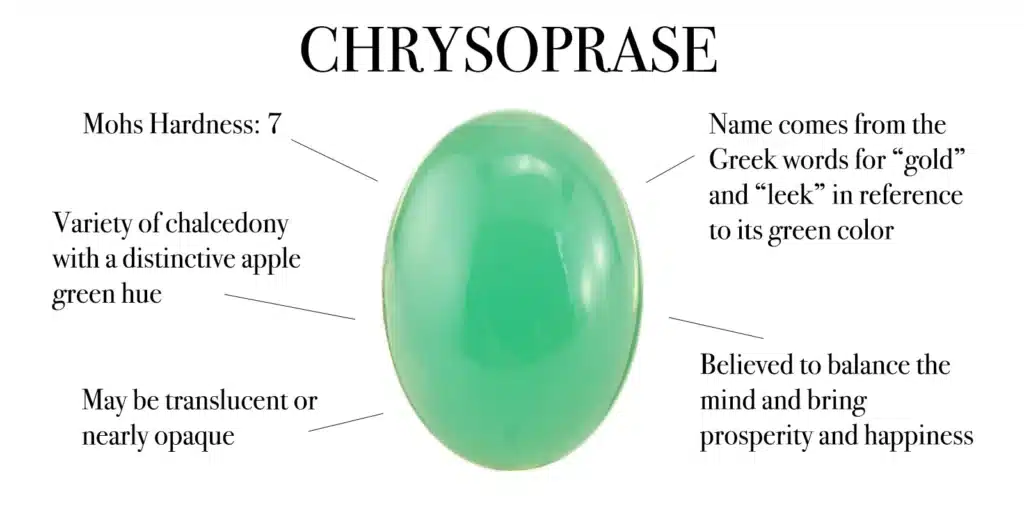
Okay, now let me tell you about a stone that truly gets me excited. If you love that vibrant green color but want something more modern and luminous, please meet chrysoprase.
The Facts & History of Chrysoprase
Like agate, chrysoprase is also a variety of chalcedony. But while emerald gets its green from chromium and vanadium, chrysoprase gets its radiant, apple-green glow from trace amounts of nickel.
This gives it a completely different personality—less of a deep forest green and more of a joyful, electric pop of color. It is, by a wide margin, the most valuable and sought-after type of chalcedony.
Historically, it was a favorite of Frederick the Great of Prussia, who decorated his palace with it. Legend says Alexander the Great carried a piece of chrysoprase on his belt for victory in battle.
Meaning and Why It’s a Great Choice
Chrysoprase shares a connection with the Heart Chakra, just like emerald, but its energy is different. It’s a stone of pure joy, optimism, and prosperity. It’s believed to help heal a broken heart by promoting forgiveness and filling you with a sense of buoyant, hopeful energy.
It’s less about deep introspection and more about opening yourself up to the flow of love and abundance in the universe.
Why this is a fantastic May birthstone choice:
- The Color: It’s simply spectacular. High-quality chrysoprase, mostly from the famous Marlborough deposit in Australia, has a stunning, uniform color and a translucency that makes it look like it’s glowing from within.
- The Modern Vibe: It has a clean, high-fashion feel that works beautifully in minimalist and modern jewelry designs.
- Great Value: While it’s pricier than agate, chrysoprase offers an incredible splash of vivid color for a moderate price, typically ranging from $10 to $50 per carat for beautiful material.
At a Glance: A GIA Expert’s Comparison
To make it easy, here’s my insider’s cheat sheet comparing these three incredible May birthstones.
| Feature | Emerald | Agate | Chrysoprase |
| Color Source | Chromium / Vanadium | Varies (Iron, etc.) | Nickel |
| Geology | Beryl (Macro-crystalline) | Chalcedony (Micro-crystalline) | Chalcedony (Micro-crystalline) |
| Hardness (Mohs) | 7.5 – 8 | 6.5 – 7 | 6.5 – 7 |
| Toughness | Poor (Brittle) | Excellent (Tough) | Good (Tough) |
| Typical Cost | Very High ( | Very Affordable ($) | Moderate ( |
| Core Meaning | Love, Rebirth, Truth | Balance, Strength, Grounding | Joy, Optimism, Abundance |
| Primary Sources | Colombia, Zambia, Brazil | Brazil, Uruguay, Mexico | Australia, Poland, Tanzania |
| Mehedi’s Take | A timeless, high-value gem for special occasions. An investment in legacy. | The best choice for unique, durable, and affordable daily-wear jewelry. | The perfect pick for a stunning pop of modern color with a joyful vibe. |
The Cardinal Rule: How to Care For Your Emerald Jewelry
Please, read this section twice. If you take away only one piece of practical advice from this entire guide, let it be this. This is non-negotiable. As a GIA expert who has spent years examining gems, I have seen more beautiful, valuable emeralds ruined by well-intentioned mistakes than by anything else.
Here is the most critical fact you need to understand: Emerald is hard, but it is brittle.
It has a Mohs hardness of 7.5 to 8, meaning it’s very resistant to scratches. But because of its natural internal jardin (inclusions), it can be easily chipped, cracked, or fractured by an accidental knock or the wrong cleaning method.
You must treat your emerald with a level of care that you don’t need for a diamond or a sapphire. Trust me on this. A little caution will ensure your gem remains stunning for generations.
The Do’s and Don’ts of Emerald Care
This isn’t complicated, but it is vital. Let’s make it crystal clear with a simple Do and Don’t list.
| Do | Don’t |
| ✅ Clean with warm water, mild soap, and a soft brush. | ❌ NEVER use an ultrasonic cleaner. |
| ✅ Store it separately in a soft pouch or lined box. | ❌ NEVER use a steam cleaner. |
| ✅ Take it off before strenuous activity or chores. | ❌ NEVER expose it to harsh chemicals. |
| ✅ Put jewelry on after applying lotions or perfumes. | ❌ NEVER submit it to sudden, extreme temperature changes. |
| ✅ Have it checked by a professional jeweler annually. | ❌ NEVER assume it’s as tough as a diamond. |
The Single Biggest Mistake You Can Make
Let’s focus on the most important “Don’t” on that list. Never, ever put your emerald jewelry in an ultrasonic cleaner.
I know your local jeweler might drop your diamond rings in one for a quick sparkle, and it works wonderfully for them. But for an emerald, this can be a catastrophic decision.
Here’s why: Ultrasonic cleaners work by sending high-frequency vibrations through a cleaning solution. For an emerald, these vibrations can cause its natural, microscopic fissures to worsen, potentially causing a visible crack.
Worse yet, it can cause the oils or resins used to treat the emerald (remember, over 99% are treated) to “sweat out” or become dislodged. I’ve seen stones go into an ultrasonic cleaner looking vibrant and come out looking cloudy, dull, and fractured. It can permanently alter the appearance of your gem in a matter of minutes.
The Only Safe Way to Clean Your Emerald Jewelry
Forget the fancy machines. The best way to clean your emerald is the old-fashioned way. It’s gentle, safe, and effective.
- Prepare a small bowl of warm water. Not hot, just comfortably warm. Add a few drops of a simple, mild dish soap (like original Dawn). Avoid anything with harsh detergents, moisturizers, or abrasives.
- Soak your jewelry for a few minutes. This will help loosen any accumulated dirt, oils, or lotion.
- Use a very soft brush. An extra-soft toothbrush or even a small makeup brush is perfect. Gently scrub around the stone, paying special attention to the underside and the setting where grime builds up. Be gentle. You are not scrubbing a floor; you are coaxing dirt away from a precious gem.
- Rinse thoroughly. Rinse the jewelry under a gentle stream of warm running water. Pro tip: plug the sink first. You would not believe how many panicked calls I’ve gotten over the years from people who watched their precious jewelry slip down the drain.
- Pat dry carefully. Use a soft, lint-free cloth (like a microfiber cloth for eyeglasses) to gently pat it dry. Don’t rub aggressively.
That’s it. That’s the whole process. Following this simple routine is the absolute best way to protect your investment and keep your beautiful May birthstone looking its best for a lifetime.
Wearing the May Birthstone: Style, Jewelry & My Top Picks
An emerald isn’t just a stone you wear; it’s a piece you present. From my years in this business, I can tell you that a fine emerald has a personality all its own—it’s confident, regal, and unapologetically vibrant. The key to styling it well is to let that personality shine through.
You don’t have to look far to see its star power. Think of Angelina Jolie at the 2009 Oscars, wearing those now-legendary 115-carat emerald drop earrings. Or think of the breathtaking emerald and diamond suite by Bulgari that Richard Burton famously gifted Elizabeth Taylor, a woman who knew a thing or two about iconic jewelry.
These famous emeralds prove a point: a great emerald doesn’t just complement an outfit; it makes the outfit. But you don’t need a red carpet to wear one beautifully. Here’s my expert take on how to choose the right emerald jewelry for your style and your life.
Emerald Rings: The Ultimate Power Move
Emerald engagement rings come in a stunning array of hues, from yellow-green to blue-green, which only adds to their value. Choose your shade and follow your ring to THE emerald city.
An emerald ring is often a cocktail or right-hand ring, and for good reason—it’s a bold statement.
- The Look: An emerald-cut or cushion-cut emerald solitaire is the epitome of classic elegance. Set in yellow gold, it has a warm, vintage feel. In platinum or white gold, it becomes modern and crisp. Three-stone rings, often with diamond side stones, are another timeless choice that adds brilliance and highlights the deep green of the center stone.
- My Advice: If you’re considering an emerald ring for frequent wear, I’d strongly advocate for a protective setting like a bezel or a halo. These settings guard the vulnerable edges and corners of the stone against accidental knocks, giving you a little more peace of mind.
Emerald Necklaces: The Epitome of Elegance
From a practical standpoint, a necklace is my favorite way to wear a significant emerald. It’s protected from the majority of impacts and sits right in the line of sight where its magnificent color can be truly appreciated.
- The Go-To Classic: An emerald solitaire pendant is perhaps the most versatile piece of fine jewelry you can own. It can be worn with everything from a t-shirt to a formal gown.
- The Modern Staple: For a more contemporary feel, look for station necklaces, where smaller emerald beads or bezel-set gems are dotted along a fine chain. It’s a wonderfully subtle way to wear the color.
Emerald Earrings: The Perfect Frame for the Face
Add a vibrant touch of color with high-quality emerald earrings. From dramatic hoops to emerald stud earrings, Blue Nile have the perfect pair of emerald earrings for any occasion.
Give the gift of these green-hued earrings for a special May birthday, anniversary or other celebration.
Or, treat yourself to a shining pair of earrings with emeralds. Blue Nile offer these stylish pairs in yellow, rose or white gold.
Emerald earrings have a unique ability to draw light and attention to your face. There are two main ways I advise clients to go here:
- The Smart Start: A pair of simple emerald stud earrings is the perfect entry point into the world of emerald jewelry. They provide that pop of incredible color for daily wear. This is where I almost always recommend lab-created emeralds—you can get a perfectly matched, vibrant green pair with excellent clarity for a fantastic price.
- The Dramatic Statement: For special occasions, nothing beats a pair of emerald drop earrings. Whether it’s a simple briolette or an intricate design surrounded by diamonds, they add instant glamour and sophistication.
Emerald Bracelets: A Note of Caution
I want to be completely honest with you here, as your advocate. Bracelets take more hits and bumps than any other piece of jewelry. An emerald tennis bracelet is undeniably one of the most beautiful sights in the jewelry world, but it carries a high risk for a stone as brittle as emerald.
- My Advice: If you have your heart set on an emerald bracelet, treat it like the special piece it is. Reserve it for formal occasions where it’s less likely to be knocked against a desk or a doorway.
For a piece you can wear day in and day out without worry, you might find that other stones are better suited for wristwear. For stunning, ready-to-wear pieces, these top 5 gemstone bracelets give you a great idea of how more durable stones like agate can be styled for beautiful, stress-free daily wear.
Ultimately, wearing the May birthstone is about choosing a piece that feels like you. Whether it’s a subtle stud or a showstopping ring, my final advice is to choose the piece that you’ll be excited and confident to wear.
FAQs: Your May Birthstone Questions, Answered
My Final Word: A Gem on Your Side
And there you have it—the complete insider’s story on the May birthstone. We’ve journeyed from the regal, historic Emerald to the grounded, one-of-a-kind Agate and the joyful glow of Chrysoprase. My single goal was to pull back the curtain and show you that there’s no single ‘best’ choice—only the one that is best for you, your style, and your story.
Whether you’re drawn to a stone for its timeless beauty, its powerful healing energy, or its practical durability, you’re now armed with the expert knowledge to make a decision you can feel truly confident in. Ultimately, choosing a gemstone isn’t just a purchase; it’s a personal statement. Choose the one that feels like yours. You’ve got this.


